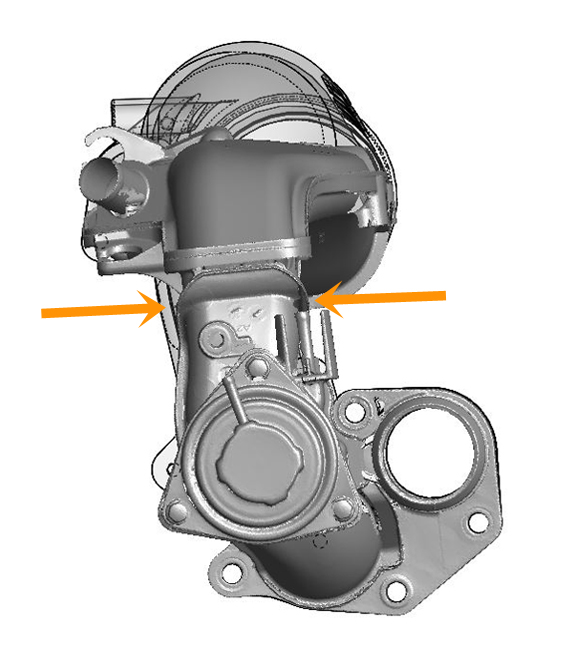Honda CivicX Turbo Inlet Pipe Prototype Design – Design Pt. 3
It’s been a few months since our last update on the Turbo Inlet Pipe for the L15B7 and MANY of you have reminded us of that. In Design Blog Part 2 we showed you a CAD Model concept we developed. This was just a concept at the time and still needed development work completed.
Now, we are proud to say we’ve taken another big step. In this blog we want to share some of the challenges we faced getting to that next big step. We think its important we do so in order for the community as a whole to understand our goals and to also educate everyone.
It’s easy for us to theorize the design of a performance turbo inlet pipe which then turns into a concept like the one you saw in the last blog. It’s a very different challenge to create that concept with real life constraints.
The major constraint we faced was packaging; aka fitting a significantly larger component in the tiny engine bay of the 10th Gen Civic. Additionally, we set our own constraints: it should fit OEM flange turbochargers, require no permanent modifications, retain the OEM by-pass valve, and the installation process is as easy or better than the OEM turbo inlet pipe.
All of these constraints were met but there was one that really forced us to think outside the box.
The location shown with the black arrow was a major constraint. The OEM turbo inlet pipe constricts down to a very small square profile as it passes in between the engine block and the turbocharger wastegate actuator.
If we just reduced the diameter to fit then we would be giving up improved flow. This meant we had to give up the idea of maintaining a round profile with a targeted 76mm inner diameter.
With this decision we had to consider how to manufacture such a complex part. Giving up the round profile and also retaining the OEM by-pass valve left us with one major option. Cast… specifically, cast aluminum as it would be durable and flexible enough for this unique and complex design.
While the oblong section is still slightly smaller than the 76mm ID round section we can put that into perspective looking at the compressor inlet on the turbocharger. It is still basically double the cross-sectional area.
Here you can see just how drastic of a change was made in order to keep the larger cross-sectional area.
Huge is an understatement and sadly pictures just do not give this part justice. Soon we will be ready to share details with you about a functional prototype.
We know it’s been quite a while since this journey began. We are happy to announce we are doing everything possible to get our Turbo Inlet pipe to market by the end of the year.
Thanks for tuning in with 27WON Performance.
I DARE You to REDEFINE the Aftermarket
-Barett
P.S. If you’re curious about our development process and getting a little more insider information then check out this blog here. We hope it helps you understand some of the decisions we ask ourselves while developing our products for the community.







